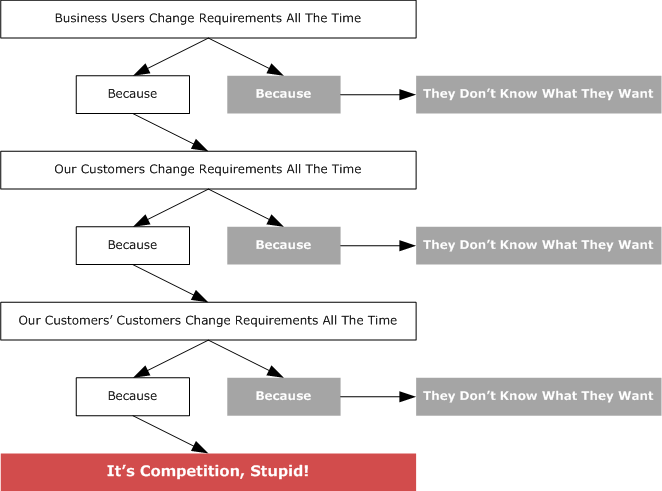Business is like war, war is like chess. Of course any analogy is lame but why not playing with analogies for fun?

Businessman: we make decision on the basis of a payback or ROI assessment.
Chessplayer: sure one must calculate in advance how much material gains - pawns and figures - may result from a move. We calculate combination too. Yet our game consists not only of combinations. There are forced moves when you calculate rather possible losses than gains. There are moves aimed to pure position improvements. A player may sacrifice a pawn for position improvement. After all if your position does not develop, you won’t have a chance for the attacking combination and ROI would be simply out of question.
Militaryman: we call it getting into a strategic funnel: move after move one has fewer and fewer possible moves that are not leading to defeat.
Businessman: we have company’s strategy too.
Chessplayer: we call it a game plan. Yet in our case the same player build and perform the plan and you calculate win/loss balance after every few moves and depending on the result the chair can take another CEO. It would be interesting to watch your team at the chess board.
Militaryman: a chess game corresponds to the battle or campaign level. A commander may be replaced in the course of the battle only under exceptional circumstances. But a change of command is not uncommon if a war lasts long enough. Business strategy expands beyond the next war so it’s out of our scope, being equivalent rather to geopolitics.
Chessplayer: by the way we calculate not only material gains. There is also a tempo: gaining a tempo means that a player has spent one move less than the opponent. As the result the player gains the initiative: he has many moves to chose from while most of opponent’s moves are forced. Besides there is game’s time limit so we search not the best move but a good enough move that can be found at a shorter time possible.
Militaryman: we calculate the operation’s tempo too. A classical example is mobilization and deployment timings that become the cornerstone of the famous Schlieffen Plan of the German General Staff for the war that was called later First World War. We also know how to drive an enemy under the pressure of chess clock’s flag: by flooding its headquarters with contradictory information and misinformation leave him no time to digest it which eventually leads to complete paralysis of command and control.
Businessman: ok, guess now I’ve got what this “business agility” thing I heard so much is about…
This post continues ”ROI of ERP and BPM” topic. BPM is a speedy, combinational, attacking game while a corporate systems deployment is struggle for the position which alone makes combinational play possible. Or a forced move at bad cases.





